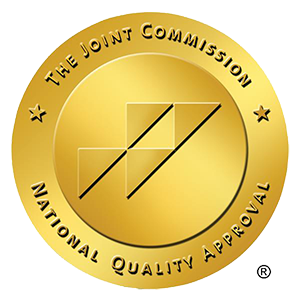Inhalant addiction is a growing concern, affecting individuals of all ages, particularly young people. According to the National Institute on Drug Abuse, nearly 22.7 million Americans have used inhalants at some point in their lives, with teens and young adults being the most at risk. Despite the seemingly harmless nature of substances like spray paints, glues, and aerosols, their misuse can lead to serious health consequences, including brain damage and even death.

At Surf City Detox, located in serene Huntington Beach, California, we understand the complexities of this often-overlooked addiction. Our team provides comprehensive care through detox, residential treatment, and dual diagnosis programs tailored to treat not just the addiction but the underlying factors driving it. If you or your loved one are struggling with inhalant addiction, our compassionate and experienced professionals are here to guide you toward lasting recovery.
Defining Inhalant Addiction
To understand inhalant addiction, it is essential to define what constitutes inhalants. Inhalants are volatile substances that can produce chemical vapors, which, when inhaled, result in mind-altering effects. Commonly misused inhalants often include solvents, aerosol sprays, gases, and nitrites. The euphoric effects can be profound, leading to repeated use and, ultimately, addiction.
Common Types of Inhalants
Volatile Solvents: These are liquids that vaporize at room temperature and are found in many household and industrial products. Examples include:
- Paint thinners and removers
- Glue
- Nail polish remover
- Gasoline
- Cleaning fluids
Aerosols: These are sprays that contain propellants and solvents. Examples include:
- Spray paints
- Hair sprays
- Deodorant sprays
- Fabric protector sprays
- Cooking sprays
Gases: These include medical anesthetics and gases used in household or commercial products. Examples include:
- Nitrous oxide (commonly known as “laughing gas”)
- Propane
- Butane (found in lighters and refills)
- Refrigerants
Nitrites: Often referred to as “poppers,” these are used to enhance sexual experiences rather than to achieve a high. Examples include:
- Amyl nitrite
- Butyl nitrite
- Cyclohexyl nitrite
Each of these inhalants can be found in ordinary households, making them easily accessible to individuals, especially teenagers and young adults, who may seek novel experiences or escape from reality. The allure of these substances often lies in their immediate effects, which can include feelings of euphoria, hallucinations, and a sense of invincibility. However, the high is typically short-lived, prompting users to inhale repeatedly in a short period, which can lead to dangerous levels of intoxication and increase the risk of overdose.
The Effects of Inhalant Addiction

Short-Term Effects
- Euphoria or “High”: A brief feeling of intoxication or lightheadedness.
- Dizziness and Nausea: Users often feel unsteady or experience stomach discomfort.
- Slurred Speech: Difficulty speaking clearly due to impaired motor control.
- Lack of Coordination: Trouble walking or performing simple tasks.
- Headaches: Common after inhaling toxic fumes.
- Nosebleeds or Irritation: Irritation of the nose, throat, or lungs from chemical exposure.
- Loss of Consciousness: In severe cases, users may faint or pass out.
- Confusion: Difficulty thinking clearly or focusing.
- Hallucinations: Seeing or hearing things that aren’t there.
- Aggression or Mood Swings: Sudden changes in behavior or irritability.
- Impaired Judgment: Increased risk-taking or dangerous behavior.
- Sudden Sniffing Death Syndrome: A fatal heart arrhythmia that can occur even after a single use.
- Asphyxiation: Lack of oxygen due to inhaling concentrated fumes.
- Seizures: Triggered by abnormal brain activity caused by toxic chemicals.
Long-Term Consequences
- Brain Damage: Chronic inhalant use can cause permanent damage to the brain, including memory loss, reduced cognitive function, and difficulty with learning and decision-making. This is often due to oxygen deprivation and the toxic effects of chemicals on brain cells.
- Organ Damage: Prolonged exposure to inhalants can harm vital organs, including:
- Liver: Damage or failure due to the toxic chemicals.
- Kidneys: Impaired function or failure to filter harmful substances.
- Lungs: Chronic respiratory issues from inhaling irritants.
- Heart: Increased risk of arrhythmias and heart failure.
- Hearing Loss: Certain inhalants, like toluene, can damage the auditory nerves, leading to partial or complete hearing loss.
- Nerve Damage: Peripheral neuropathy, or damage to the nerves outside the brain and spinal cord, can cause muscle weakness, numbness, and tingling.
- Psychological Dependence: Users may develop a strong emotional reliance on inhalants to cope with stress or emotions.
- Mood Disorders: Chronic use can lead to depression, anxiety, or other mental health issues.
- Cognitive Decline: Difficulty with focus, problem-solving, and memory retention.
- Isolation: Strained relationships with family and friends due to erratic behavior or secrecy.
- Academic or Work Issues: Poor performance or loss of employment due to impaired abilities and absenteeism.
- Legal Problems: Possession or misuse of certain inhalants can lead to legal consequences.
- Chronic Illness: Long-term inhalant use can contribute to conditions like chronic obstructive pulmonary disease (COPD).
- Increased Risk of Death: Repeated use increases the likelihood of fatal outcomes, such as sudden sniffing death syndrome, asphyxiation, or overdose.
These consequences may not be immediately evident and often worsen over time, significantly impacting an individual’s quality of life and overall health. The social ramifications can be equally severe, as relationships with family and friends may deteriorate, and individuals may find themselves isolated due to their addiction, creating a vicious cycle that is difficult to escape.
The long-term effects of inhalant abuse highlight the importance of early intervention and treatment. If you’d like to discuss recovery options or how Surf City Detox can help, reach out to our team today!
The Path to Recovery from Inhalant Addiction
Recognizing the Need for Help
The first step toward recovery often involves acknowledging the addiction. Many users may succumb to denial, not realizing the severity of their dependency on inhalants. Recognizing behavioral changes, declining health, or diminished social interactions can be key indicators that help is needed. Inhalant use can lead to a range of physical and psychological issues, including cognitive impairments and mood disorders, which can further complicate the recognition of the addiction. Friends and family members may notice these changes before the individual does, making their observations and interventions crucial in the early stages of recovery.
Treatment Options for Inhalant Addiction
Once the need for help is recognized, various treatment options become available:
- Detox programs
- Counseling and therapy (individual and group)
- Support groups like Al-Anon
- Rehab centers (like Surf City Detox) specializing in substance abuse
Successful treatment plans often involve a combination of these options tailored to the specific needs of the individual. Detoxification is typically the first step, allowing the body to rid itself of harmful substances while managing withdrawal symptoms. Following detox, counseling, and therapy play a vital role in addressing the underlying issues that may have contributed to the addiction. Cognitive-behavioral therapy (CBT) has proven particularly effective, helping individuals to identify and change negative thought patterns and behaviors associated with inhalant use.
Additionally, support groups provide a sense of community and shared experience, which can be invaluable in maintaining long-term sobriety. These groups often foster an environment of understanding and encouragement, allowing individuals to share their struggles and triumphs in a safe space.
The Role of Support Systems in Recovery
Family and Friends Influence
The role of family and friends is crucial in the recovery process. Supportive loved ones can provide understanding, motivation, and a safe space for open dialogue about struggles and victories in the recovery journey. Their involvement often helps individuals feel less isolated and more empowered to pursue sobriety.
Family members can participate in educational programs that help them understand the complexities of addiction, enabling them to offer more effective support. This shared knowledge can strengthen familial bonds and create a more empathetic environment, where individuals feel comfortable discussing their challenges without fear of judgment.
Professional Support Networks
In addition to personal connections, professional support networks such as therapists, counselors, and peer support groups play an essential part in recovery. These resources offer specialized knowledge and strategies to help individuals navigate their challenges and build healthier coping mechanisms. Recognizing that recovery is a collaborative process fosters resilience and encourages sustained sobriety.
Many professionals utilize evidence-based practices that are effective in treating substance use disorders, ensuring that individuals receive the most appropriate care tailored to their unique situations. This professional guidance can also help individuals set realistic goals and celebrate small milestones, reinforcing their commitment to recovery.
Support groups, such as those based on the 12-step model, provide a community of individuals who share similar experiences and struggles. This sense of belonging can be incredibly powerful, as it allows members to learn from one another and share coping strategies that have worked for them.
The collective wisdom found in these groups can serve as a beacon of hope, reminding individuals that they are not alone in their journey. Additionally, many support networks offer resources for family members, helping them understand how to best support their loved ones while also taking care of their own emotional needs.

Learn More About Inhalant Addiction Treatment at Surf City Detox!
No one should face this battle alone, and we are here to provide the tools, guidance, and encouragement you need to start over. If you or someone you love is struggling with inhalant addiction, don’t wait—reach out to Surf City Detox today and take the first step toward a brighter, healthier future. Your recovery starts here.
Surf City Detox Accepts Insurance
We accept many insurance plans to help cover the cost of addiction treatment. Contact your provider to get more information or call our office to reach an intake specialist.

















